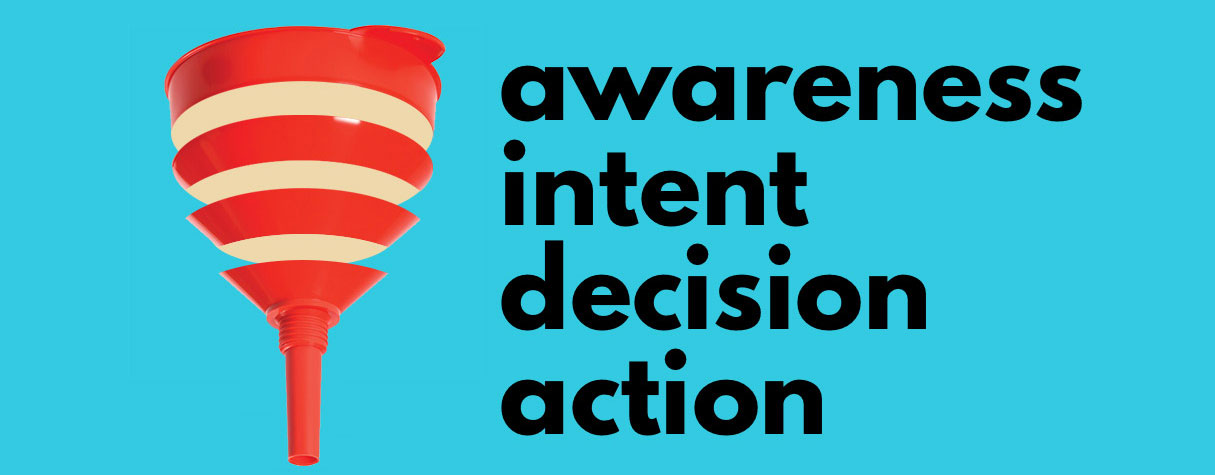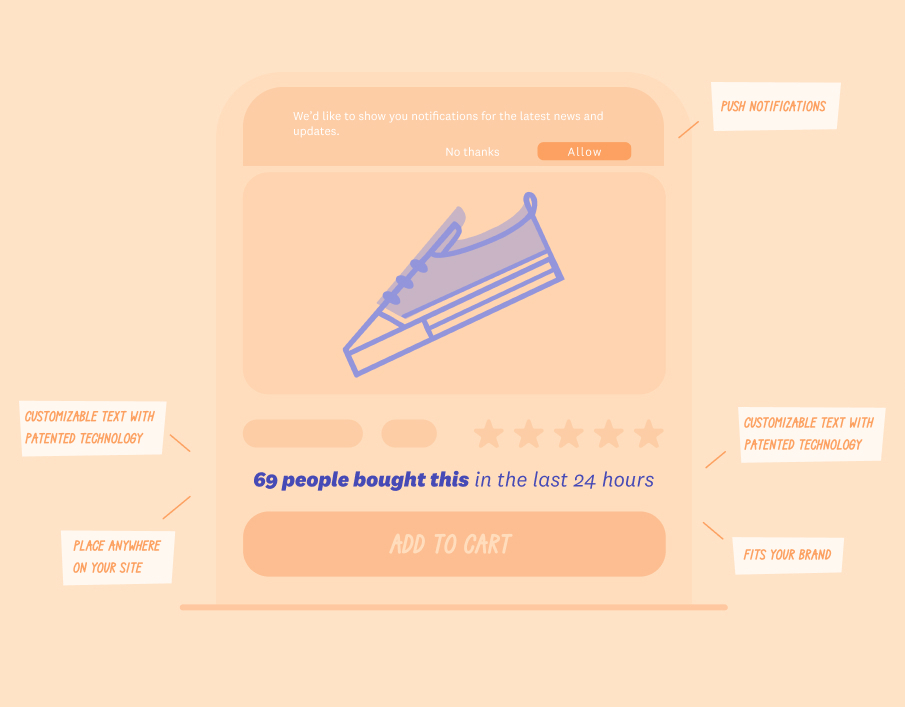Table Of Content
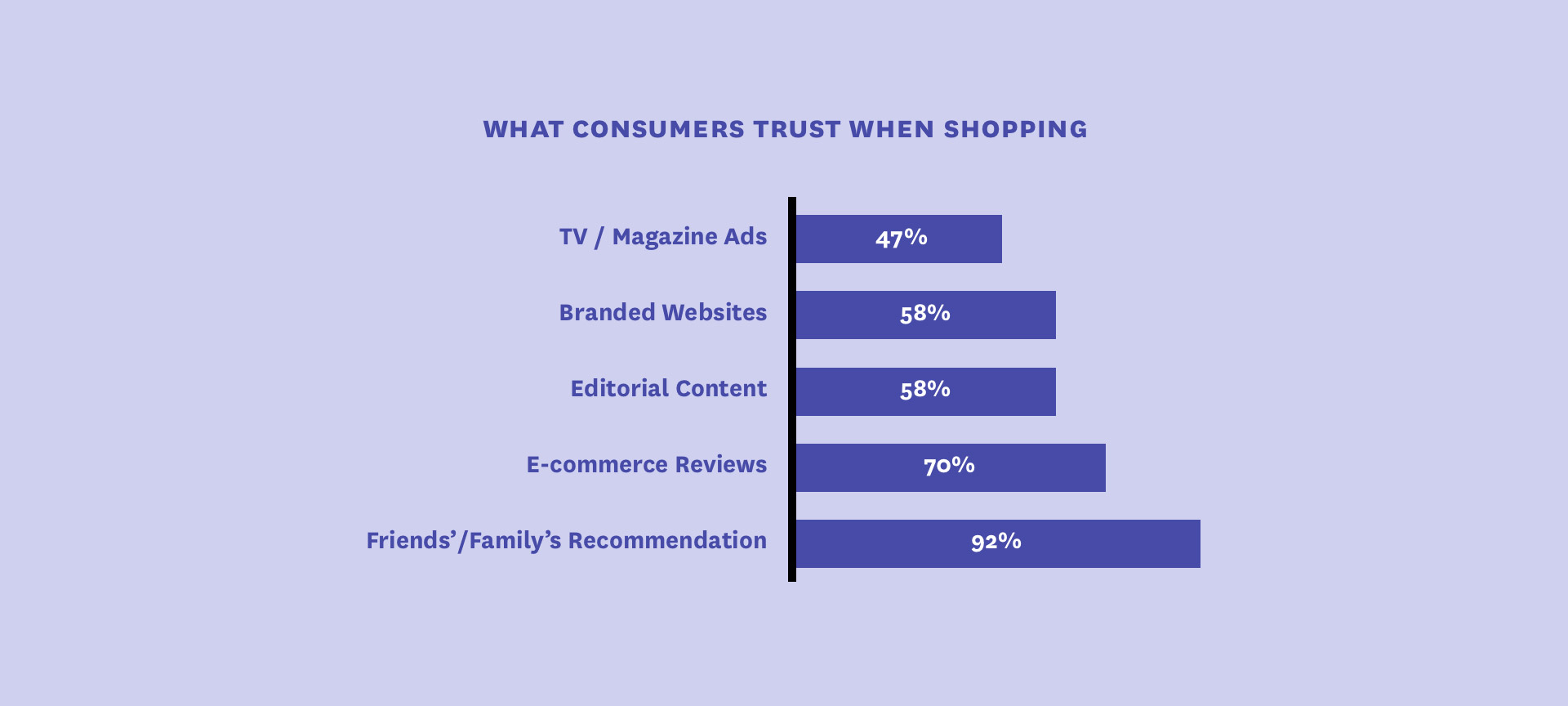
Think back to the last time you planned to try a new restaurant.
How did you make a decision about where to go? Which factors influenced your decision the most?
If you’re anything like me, you looked for reviews on Yelp and similar sites before finalizing your plans. You wanted to make sure your restaurant of choice was well-liked before deciding to spend your time and money there.
And you know what’s funny about that?
Even a restaurant that has tons of glowing reviews isn’t necessarily one you’ll like.
But admit it – you’d probably end up picking the one with the best reviews anyway due to the strong influence of others’ opinions (I
know I would).
That’s a great example of social proof, a psychological phenomenon
where people conform to the actions of others because they assume those
actions are correct.
Because we live in a world full of millions of competing choices, our subconscious is trained to take shortcuts in the decision-making process. So, instead of doing hours of research on a product or service, we trust the decisions of our peers and people in our social networks.
Dr. BJ Fogg, founder of Persuasive Tech Lab at Stanford University, created what he calls the Fogg Behavior Model. It shows three elements that must converge at the same moment for a behavior to occur: Motivation, Ability, and Trigger.
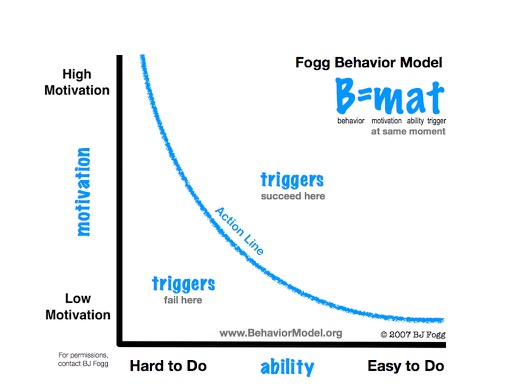
When a desired behavior does not occur (i.e., a visitor purchasing a product from your website), you can assume that at least one of those three elements is missing.
And for eCommerce marketing, social proof is one of the most powerful tools to help generate the crucial element of Motivation by earning consumer trust.
Chances are, you’ve seen social proof on many eCommerce websites, but maybe you’re wondering:
Exactly how can I use social proof to boost my store's sales?
Keep reading, and you’ll learn several social proof strategies you can use to make your potential customers more likely to hit the “Buy” button.
How to Use Social Proof for eCommerce Marketing
Optimize Product Pages with Reviews
If you’re selling products online, you need positive reviews. They’re pretty powerful when it comes to influencing buying decisions.
Why?
Because 70% consumers trust online
reviews when shopping.
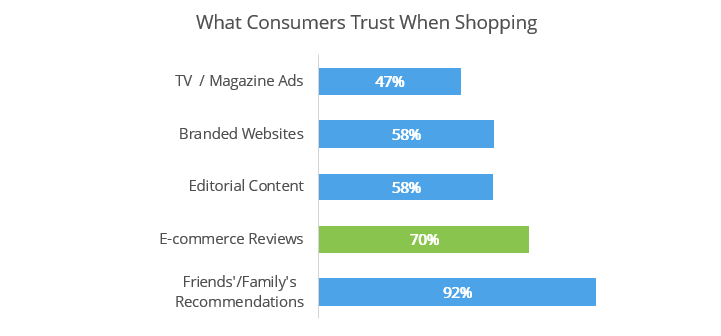
And according to an iPerceptions study, about 63% of consumers are more likely to make a purchase from a site with product ratings and reviews.
So, you could definitely be missing out on some sales if you aren’t collecting reviews and displaying them on your product pages.
Take a look at how popular retailer Zappos does it on their site:
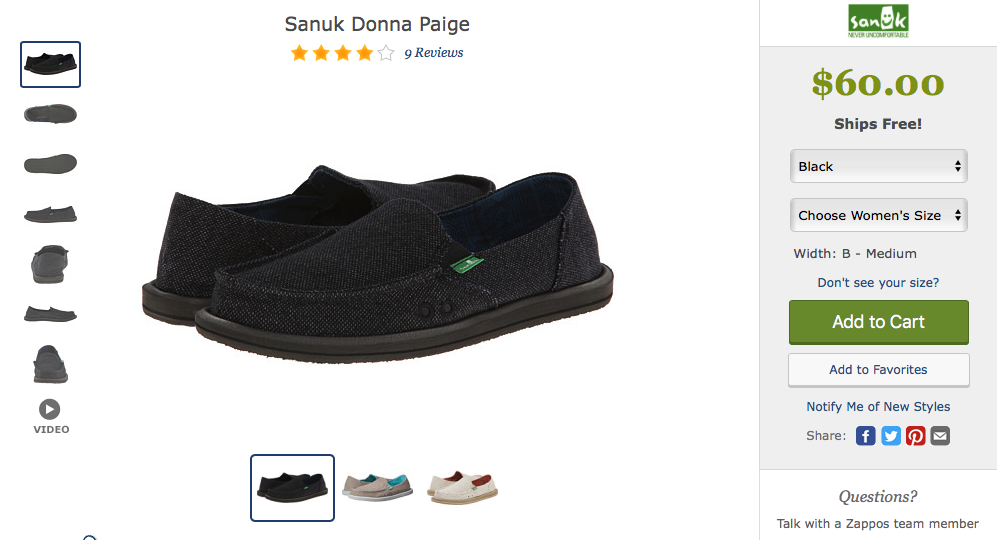
That “9 Reviews” link under the product name lets the shopper know right away that they can check out other people’s opinions and experiences using the product, which allows them to make a better purchasing decision.
And when you make someone feel confident in their purchasing decision, you greatly increase the chances that they buy from you.
Now, you might be thinking:
I don’t want to collect product reviews – I have a star rating system,
and that’s enough.
The problem with that?
Star ratings don’t tell the whole story or answer pre-sales questions.
Let me explain in more detail with an example.
Say you want to buy a case for your phone. But not just any case will do – you want one that will prevent your phone from shattering when it’s dropped.
So, you start researching online and come across this product on Amazon:
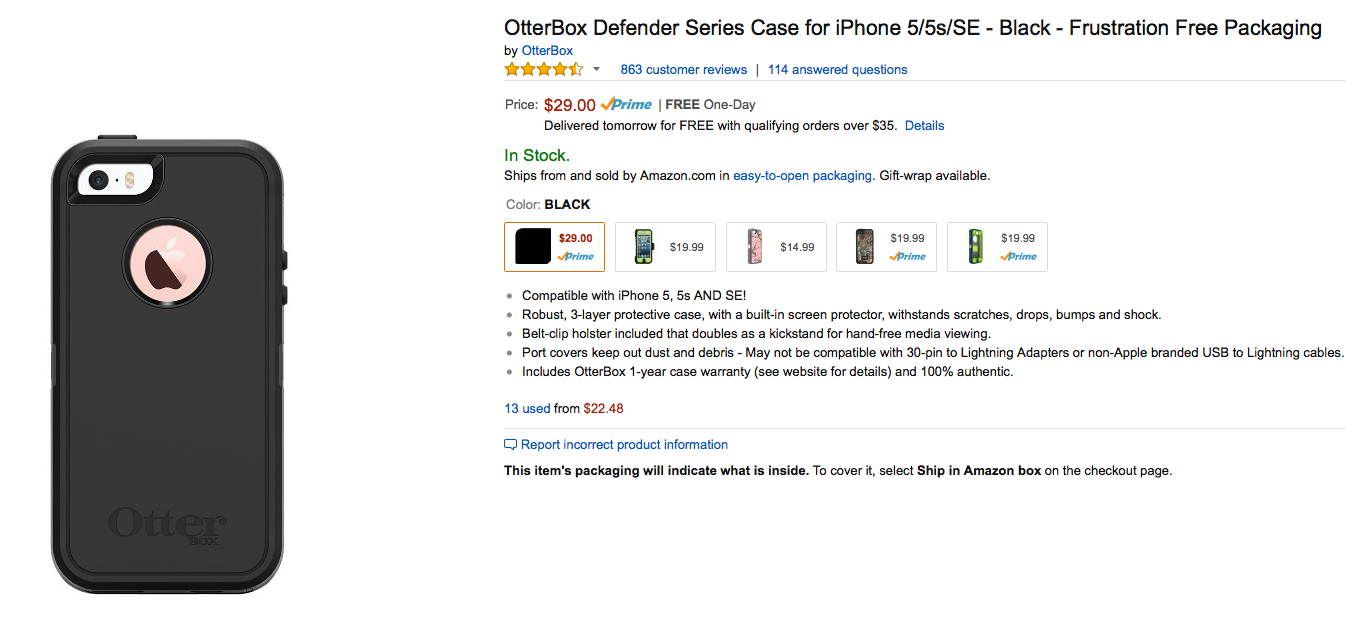
You can see that the star ratings are high and the company claims that the case withstands drops and shock.
Would you buy at that point?
Probably not – after all, any company can say that their product is great. You want to see proof and read real stories of customers using the product.
You keep scrolling, and you see this review:

After seeing reviews like this that confirm the product really works the way the company claims, you’d be a lot more confident in your buying decision.
Your customers think the same way – they want to read about the real experiences customers have with your products. So, give them what they want!
A word of warning:
You should never, ever pay people to post fake positive reviews of your products.
Seriously.
That’s because today’s customers will start to question the integrity of your brand if all of your products only have glowing, 5-star reviews.
In fact, research shows that 68% of consumers
trust reviews more when they see both good and bad scores and 30% suspect censorships or faked
reviews when they see nothing negative at all.
If you do notice a couple negative reviews, try not to get too worked up over it.
Just keep providing excellent customer service and high-quality products, and you’re sure to see the positive reviews outweigh the negative in no time.
Use UGC on Your Product Pages
Picture this:
You’re moments away from clicking the big Buy button on a website, but
you hesitate. You aren’t quite convinced of the product’s worth yet.
You think to yourself:
I want proof that this thing works the way it says it does.
So, which would be more convincing to you – a photo of a smiling model
holding the product, or a photo of a real person using it successfully
to accomplish exactly what the product is meant for?
I think you know the answer.
According to eMarketer:
“Every day, user-generated content (UGC) is part of the online experience of millions of US Internet users. From entertainment to communications to eCommerce, consumers are taking charge of the creation, distribution, and consumption of digital content.”
Let’s look at an example.
In 2013, Lego and Belkin teamed up to develop a line of customizable iPhone cases.
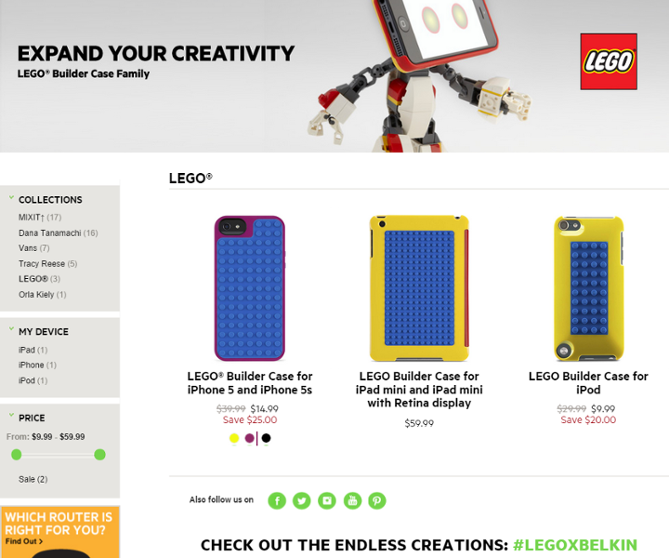
The two companies then created a social platform for customers to share pictures of the cool cases they created and show others the benefits of making their own.
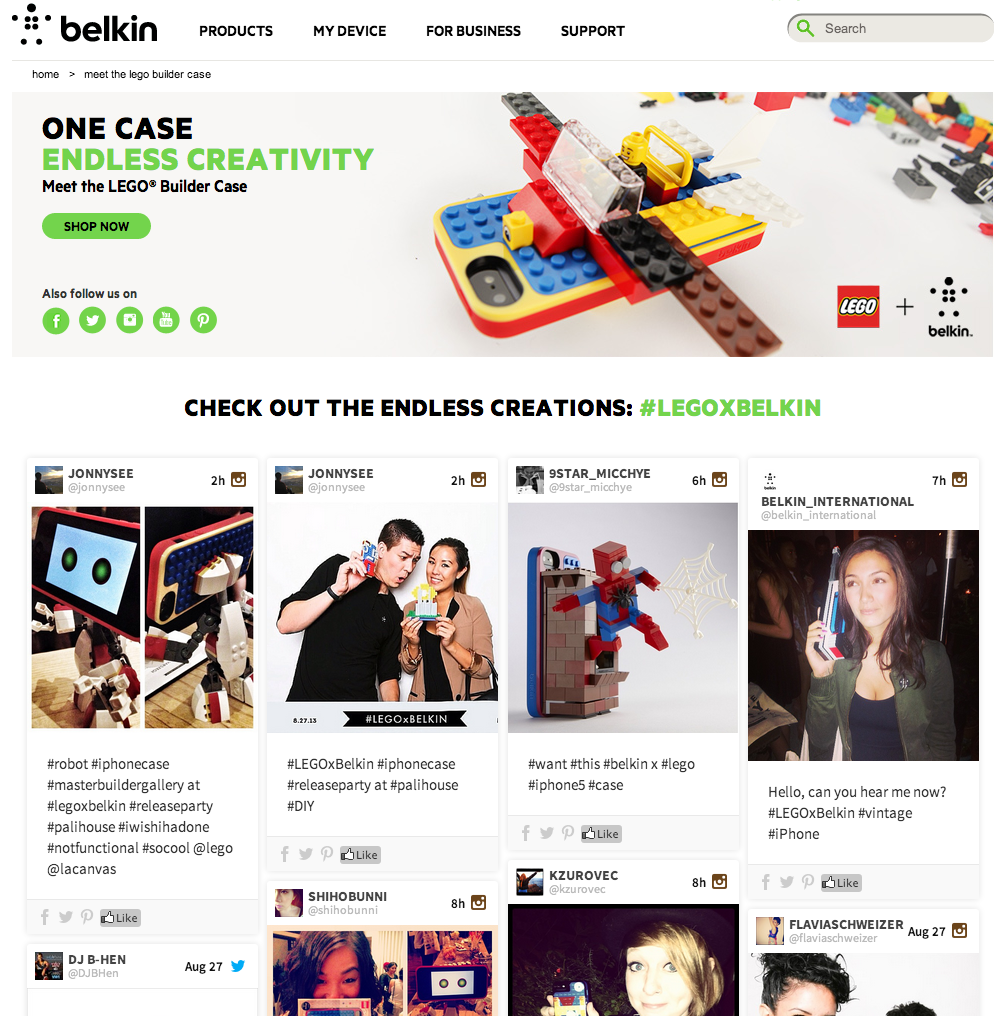
Belkin and Lego effectively convinced their customers to advertise for them. Other people saw the potential for phone case creativity and thought:
I want to do that too.
Sure, you should hire a professional to take some fancy photos or videos of your products – but you need UGC too because it’s 20 percent more influential in purchasing decisions than other media types.
It’s not a new concept, but UGC is quickly becoming the most powerful tool for eCommerce businesses to convert more people to paying customers.
Use Influencer Marketing
When an eCommerce business uses influencer marketing, it means they pay someone influential online to endorse their brand.
For example, if you own an activewear shop, you might pay a popular Instagram fitness guru to post a photo of themselves wearing the clothes you sell.
By doing so, you’d expose your product to lots of your target customers. And they’d be influenced to buy that product after seeing someone they know and like wearing it.
But what makes this approach work so well?
Simple:
The halo effect.
If you’re not familiar with the term, take a look at this explanation from Wikipedia:
The halo effect is a cognitive
bias in which an
observer's overall impression of a person, company, brand, or product influences the observer's feelings and thoughts about that entity's character or properties.
This effect causes you to judge someone’s opinion based on your overall impression of him or her.
That’s why someone who likes a specific influencer online will like and trust that influencer’s product recommendations too.
Let’s take a look at an eCommerce brand that uses social proof in the form of influencer marketing effectively:
Fruitteatox.
As you might have guessed, they sell tea. But it’s not just any tea – they claim that their tea “helps get rid of bloating” and “helps you lose excess weight.”
To spread the word about their product online, they partner with Instagram influencers like this one:
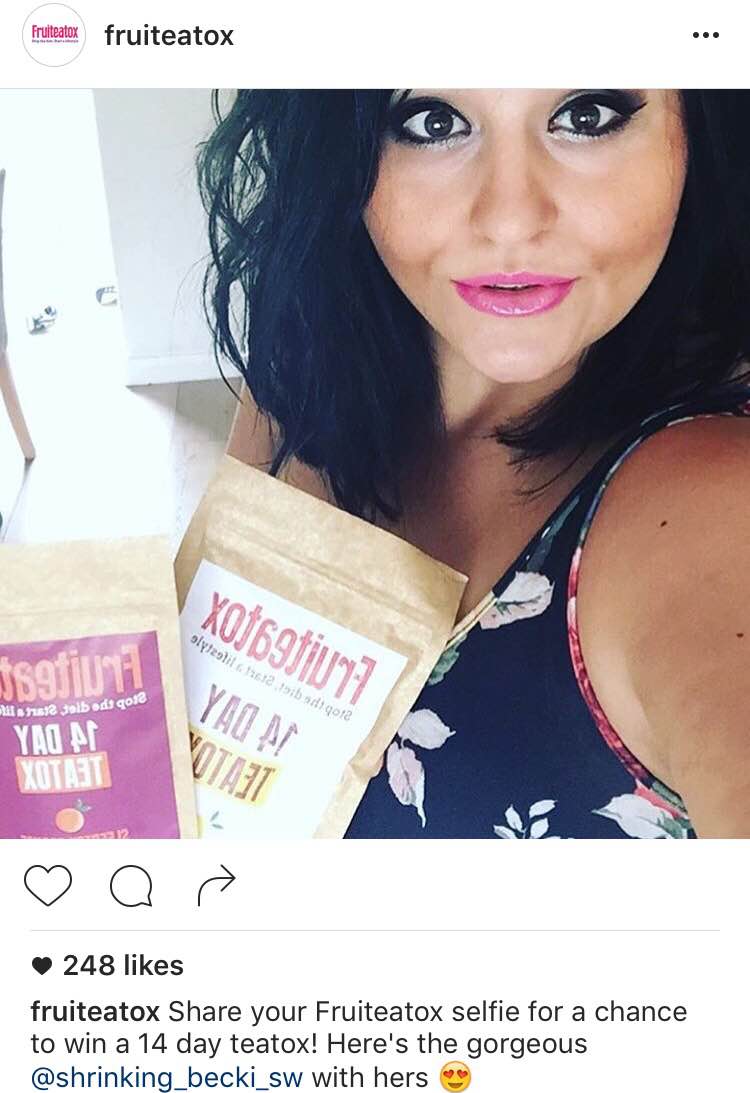
This photo, which features Fruiteatox product, was originally posted on the influencer’s Instagram account. That means all of her followers were exposed to the Fruiteatox brand – and more importantly, they were exposed to it by someone they already like and trust.
But wait a second – why did Fruiteatox decide to partner with this particular influencer?
Well, if we look at this influencer’s Instagram profile, we can see that it’s focused heavily on nutrition and weight loss.
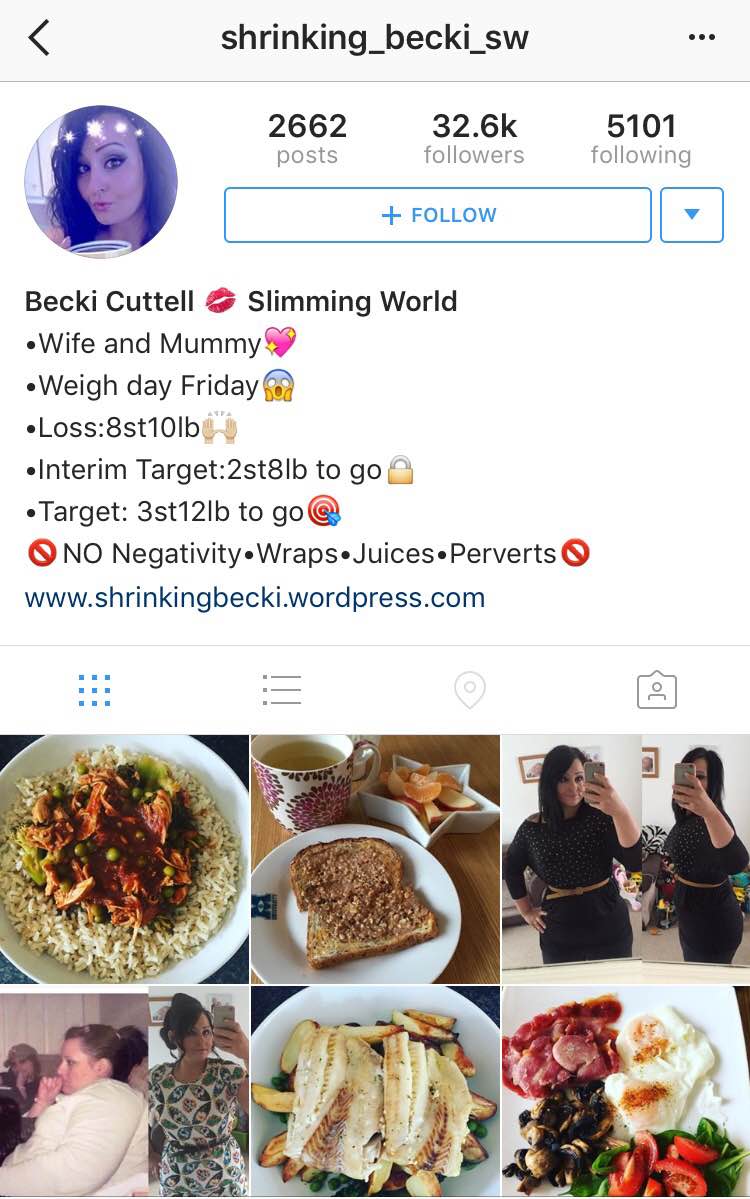
So, the people who follow her are likely to be interested in weight loss. That means they’re also likely to be interested in Fruiteatox products.
Pretty clever, right?
If you use this strategy, make sure you give your target influencer some kind of incentive to work with you. For example, you can pay them upfront for the partnership, give them commission for the sales they generate, or send them free products.
Whatever you do, make sure you choose your influencers carefully. Their following should include your target customers, just like in the Fruiteatox example above.
Because – let’s face it – the last thing you want to do is waste time and money exposing your products to people who probably aren’t going to be interested in buying!
Display Safety Badges and Media Logos
Imagine you’re waiting for a doctor to perform a complicated medical procedure on you. You feel a little nervous, so you distract yourself by looking around the room.
You can see the wall where all the doctor’s accolades normally would hang. But instead of seeing a doctorate from a reputable university, the only thing you notice is a certification from… a local veterinary school.
Uh oh.
You wouldn’t trust this “doctor” with your life, would you?
You might not trust a website without any recognizable verification, either.
Neither will your potential customers. 77 percent of website visitors worry that their personal data could be intercepted or misused online.
In eCommerce, everything depends on trust. And if the website a customer thinks about buying from doesn’t have any kind of seal of trust or safety badge that indicates trustworthiness, they’ll probably go somewhere else.
A safety badge verifies to visitors that your website is legitimate. Data is collected by the third party safety badge company that confirms your business is authentic.
Sometimes, those companies even add an extra layer of protection for the consumer by offering insurance to be paid out if the transaction becomes fraudulent.
And it’s not just any safety badge that counts. William Levins on Nuvonium noted in an internal study that their retailers had a 12 percent increase in sales when they displayed their McAfee Site Secure seal.
In a survey conducted by the Baymard Institute research group, these were the most trusted safety badges:
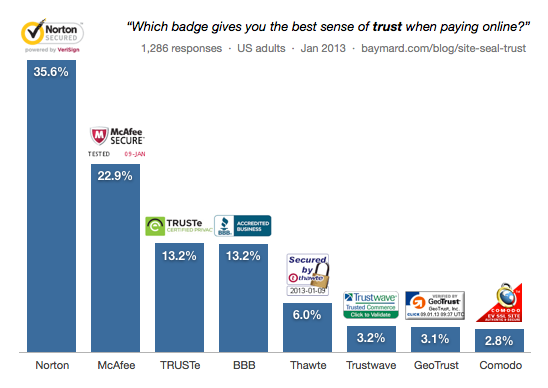
A survey conducted by Matthew Niederberger on Actual Insights found that trust logos increased the trustworthiness of a site in over 75 percent of respondents.
On top of that, he found that “61 percent of participants said they have at one time NOT completed a purchase because there were no logos present.”
In fact, according to research conducted by independent firm TNS, 70 percent of online shoppers cancelled their online order because they did not trust the transaction.
So as you can see, adding the security of a safety badge on your eCommerce site is worth your time. Odds are that that little image will have a serious impact on your conversion rates and help you generate greater revenue from your existing traffic.
Beyond safety badges, you can also benefit from media logos that show where your products are featured.
Voices.com used a row of customer logos on their
homepage to increase conversion rates by over 400 percent. Here’s what it looked like:

Because so many of these companies are multinational household names, they create social proof that impresses many visitors enough to convert them into customers.
Conclusion
There’s no doubt about it – if you handle eCommerce marketing, you need to use social proof to your advantage. It’s a great way to get your customers to trust you and persuade them to make a purchase from your site.
Sure, it might take some time to master and implement all of the strategies listed above. But it’ll be worth the boost in sales you’ll likely see as a result!
How will you use social proof to increase your eCommerce sales? Share in the comments below!




 1.svg)
 1.svg)
